|
PART 1 |
|
PART 1 |
|
|
|
| Buongiorno | Buongiorno |
| Io mi chiamo Venere. | Io mi chiamo David. |
| Io sono italiana. | Io sono italiano. |
| Io sono una donna molto bella e famosa. | Io sono un uomo molto bello e famoso. |
| Io abito in Italia. | Anch'io abito in Italia. |
| Io lavoro a Firenze. | Anch'io lavoro a Firenze. |
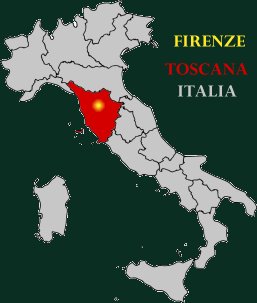
Firenze e' in Italia
Firenze e' in Toscana
La Toscana e' in Italia
|
Rewrite the words from column 1 |
||
| Buongiorno | Good morning, good day | |
| Io mi chiamo | My name is (lit.: I call myself) | |
| Io sono | I am | |
| Io sono italiana | Italian (feminine) | |
| Io sono italiano | Italian (masculine) | |
| Una donna | A woman | |
| Un uomo | A man | |
| Molto | Very | |
| Bella, bello | Beautiful, handsome | |
| Famosa, famoso | Famous | |
| Io abito in Italia | I live (lit.: I reside) | |
| Io lavoro a Firenze | I work | |
| Anch'io abito.. | Also I live.. | |
|
Test your memory |
TRANSLATE answer key 1 |
| Buongiorno | |
| Io sono | |
| Io sono italiana | |
| Io sono italiano | |
| Una donna | |
| Un uomo | |
| Molto | |
| Bella, bello | |
| Famosa, famoso | |
| Io abito in Italia | |
| Io lavoro a Firenze | |
| Anch'io abito... |
| Test your memory |
Translate answer key 2 |
| Good morning, good day | |
| My name is (lit.: I call myself) | |
| I am | |
| Italian | |
| A woman | |
| A man | |
| Very | |
| Beautiful, handsome | |
| Famous | |
| I live (lit.: I reside) | |
| I work | |
| I also live.. |
Write your Autobiography in Italian
|
My name is |
io |
|
I live in |
io |
|
I work in |
io |
io sono = I am
io non sono = I am not
|
Io sono un uomo. Io NON sono una donna. |
| Io sono una donna. Io NON sono un uomo. |
|
Io sono italiano. Io sono italiana. Io NON sono Americano. Io NON sono Americana. |
|
Io sono bello e famoso. Io sono bella e famosa. Io NON sono bello e famoso. Io NON sono bella e famosa. |
| Masculine/Feminine |
|
Nouns ending with - o are usually masculine
Nouns ending with - a are usually feminine
like stazione, ospedale, and ristorante. SOME
ARE MASCULINE, SOME FEMININE
TIP
Stazione is feminine: una stazione ospedale, ristorante are masculine: un ospedale, un ristorante
Similarly, adjectives will have to agree with the gender of
the noun: |
|
Exercise:
Using the dialogue as example, write sentences using the correct
form (Masculine/Feminine) of the article and the adjective |
|
| VENERE | un/una donna
italiano/italiana,
bello/bella e famoso/famosa
|
| DAVID | un/una uomo
italiano/italiana,
bello/bella e famoso/famosa
|
![]()
PART 2
Pronunciation
Click the link for the ALPHABET and pronunciation
|
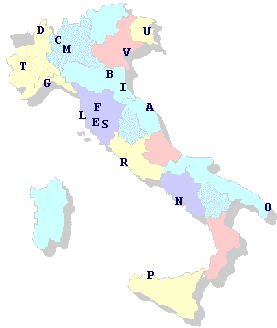 |
|
|||||||||||||||||||||
* Domodossola, Empoli, Imola, Otranto and Udine are more or less 'obligatory' for the respective initials. |
|||||||||||||||||||||||
![]()
PART 3
NAZIONI
e
NAZIONALITA'
|
|
|
|
| Ungheria | Gran Bretagna (Inghilterra) | Olanda |
| Ungherese | Inglese | Olandese |
|
|
|
|
| Spagna | Giappone | Romania |
| Spagnolo -Spagnola | Giapponese | Rumeno - Rumena |
|
|
|
|
| Irlanda | Brasile | Grecia |
| Irlandese | Brasiliano - Brasiliana | Greco - Greca |
|
|
|
|
| Polonia | Canada | Germania |
| Polacco - Polacca | Canadese | Tedesco - Tedesca |
|
|
|
|
| Cina | Austria | Francia |
| Cinese | Austriaco - Austriaca | Francese |
ADJECTIVES FEMININE of adjectives ending with -e
cinese, francese,
inglese
Adjectives ending with - o in the masculine, change to - a in the feminine. |
Say which languages you speak. Don't forget to include Italian.
DI CHE NAZIONALITA' E'?
(What nationality is he/she)
 |
 |
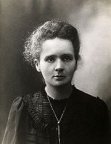 |
 |
 |
|
Sigismondo Freud masch. femm. |
Ferenc Liszt masch. femm. |
Marie Curie masch. femm. |
James Joyce masch. femm. |
Il conte Dracula masch. femm. |
 |
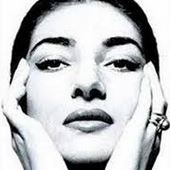 |
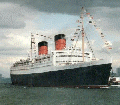 |
 |
 |
|
Pablo Picasso masch. femm. |
La "Divina" masch. femm. |
Regina Elisabetta masch. femm. |
Madama Butterfly masch. femm. |
Napoleone masch. femm. |
 |
 |
 |
 |
 |
|
Edson Arantes do Nascimento masch . femm. |
Vincent Van Gogh masch. femm. |
Jim Carrey masch. femm. |
Shakespeare masch. femm. |
Carlo Marx masch. femm. |
![]()
PART 4
I COLORI
 |
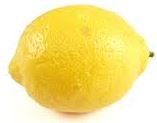 |
 |
 |
| rosso | giallo | blu | verde |
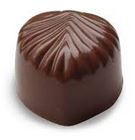 |
 |
 |
 |
| marrone | viola | bianco | nero |
|
|
|
|
|
la bandiera ungherese e' bianca rossa e verde |
la bandiera rumena e' blu, gialla e rossa |
la bandiera irlandese e' verde, bianca e arancio |

DI CHE COLORE E' LA BANDIERA ITALIANA?
La bandiera americana e'
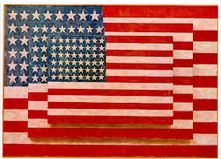
American Flag, Jasper Johns
at MoMA
| BLU | AZZURRO |
| ROSSO | ROSA |
 Il mare e' blu |
 Il cielo e' azzurro |
 La rosa e' rossa |
 La rosa e' rosa |
![]()
PART 5
PAROLE NUOVE ("New words")
 bambina |
 bambino |
 ragazza |
 ragazzo |
 donna |
 uomo |
answer key 10
Come si dice? ("How do you say?")
| Female child | |
| Male child | |
| Girl | |
| Boy | |
| Woman | |
| Man |
PAROLE VECCHIE E NUOVE ("Words, old and new")
|
REWRITE THE WORDS and the TRANSLATION |
||
|
Italiana
Italiano |
|
|
|
Simpatico
Simpatica |
|
|
|
Famoso
Famosa |
|
|
|
Buono Buona |
|
|
|
Bella Bello |
|
|
|
Bravo Brava |
|
|
|
Carino
Carina |
|
|
|
Americano
Americana |
|
|
answer key 12
Come si dice? ("How do you say?") Write both forms, masculine and feminine
| Italian | ||
| Appealing | ||
| Famous | ||
| Kind | ||
| Good (performance) | ||
| Nice | ||
| American | ||
| Beautiful |
|
A reminder
UOMO:
UN
UOMO
ITALIANO UN
("a") is the masculine form of the indefinite article ITALIANO - ITALIANA
|
|
|
Aggettivi e il loro contrario.... (adjectives and their opposites...)
| Bello, bella (handsome, beautiful) |
Brutto, brutta
(ugly) |
| Simpatico, simpatica (pleasant, appealing) |
antipatico, antipatica
(obnoxious, unpleasant) |
| Buono, buona (kind, good) |
Cattivo, cattiva (mean, nasty) |
| Alto, alta (tall, high) |
Basso bassa, piccolo piccola
(short, low) |
| Magro, magra (skinny) |
Grasso, grassa
(overweight) |
| * Giovane (young) |
Vecchio, vecchia
(old) anziano, anziana (old person, senior) |
answer key 13
|
COME SI DICE (how do you say?) |
|
Write either the masculine
of feminine form |
answer key 14
| A nice boy |
A famous woman |
| An Italian child (M) |
A handsome man |
| A pleasant woman |
An American girl |
| A kind and pleasant child (F) |
A famous American man |
answer key 15
| Un ragazzo simpatico | Una ragazza italiana |
| Una bambina buona | Un uomo famoso |
| Un bambino cattivo | Una donna americana |
Exercise:
select the correct
form (masculine or feminine) of the article and the adjective
and write them in the table below
| un/una | ragazzo | bello/bella | e | simpatico/simpatica |
| un/una | donna | giovane/giovano/giovana | e | magro/magra |
| un/una | bambino | brutto/brutta | e | cattiva/cattivo |
| un/una | uomo | italiana/italiano | antipatico/antipatica | |
| un/una | ragazza | carino/carina | e | simpatico/simpatica |
| un/una | bambina | americano/americana |
answer key 16
| Rewrite the sentences in the table above |
| 1) |
| 2) |
| 3) |
| 4) |
| 5) |
| 6) |
![]()
PART 6
I SALUTI (Greetings)
|
Buongiorno (Good day) |
Buonasera (Good evening) |
Buonanotte (Good night) |
Ciao (Hi, bye) |
Arrivederci (See you later) |
Addio (Farewell, goodbye) |
|
|
| Buongiorno |
Formal greetings used during day time when
approaching. |
| Buonasera |
Formal greeting used in the late afternoon
and evening hours. Both when you approach someone and when you are
leaving. |
| Buonanotte |
Formal and informal, used when leaving
only at the end of the evening. |
| Ciao |
Informal, used at all times among
relatives and friends or with children, both when meeting and
leaving. |
| Arrivederci |
Formal and informal, used upon leaving. |
| Addio |
Formal and informal. Melodramatic, used
upon leaving. |
|
Cultural note The type of greeting reflects the social hierarchy among people. A child will use "buongiorno-buonasera" with an adult, while the adult will use "ciao" with the children. Two adults, unless in friendly terms, will use the formal address at all times. A high school student will use the formal address with the teacher, while the teacher is allowed to use the informal address. |
These conventions go beyond
the greeting rituals.
|
They also determine the
GRAMMAR
and SYNTAX: The INFORMAL mode requires the use of the second person "TU" ("YOU" singular in English) with the corresponding form of the verb (ex. "essere" = <sei>). The FORMAL mode requires the third person singular in the feminine "LEI" (literally "SHE" in English) with the corresponding form of the verb (ex. "essere" = <e'>). |
| INFORMAL | FORMAL | |
| To a man: | "Tu sei italiano?" | "Lei e' italiano?" |
| To a woman: | "Tu sei italiana?" | "Lei e' italiana?" |
|
Why would you have to use "LEI," a
feminine pronoun, to address a male? HERE IS HOW IT CAME TO BE Even in English the highest form of formality is the third person. Think of a question posed to, say, Queen Elizabeth. It would sound like:
In Italian the vestiges of that construction are still present: the underlying reference of the formal address is "SUA ECCELLENZA" (Your Excellency) as in the example: "SUA ECCELLENZA E' ITALIANO?" ("Is Your Excellency Italian?") Since ECCELLENZA is a feminine noun, the corresponding personal pronoun is LEI. Thus the outcome:
|
![]()
answer key 17
| Good morning | Good day |
| Good night | Good evening |
| Farewell | Bye |
| See you later | Hi |
|
|
|
ACTIVITY
Look up WIKIPEDIA to learn about the origin of the word CIAO |